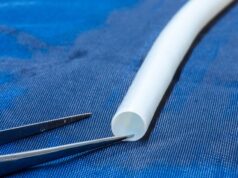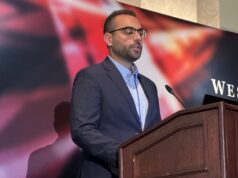The majority of recurrences following thermal ablation for varicose veins are associated with perforating veins, results of the REVATA study have shown. The investigation involved 164 varicose vein patients who were treated with radiofrequency or endovenous laser ablation.
The results of the REVATA (Recurrent veins after thermal ablation) study were presented by Ronald Bush, Midwest Vein & Laser Center, Dayton, USA, at the iCON meeting in Arizona, and at the American Venous Forum in Orlando, and also published in the Journal of Vascular and Endovascular Surgery.
“Factors contributing to recurrence of varicose veins after thermal ablation are not well known. The goal of this prospective, non-randomised, multicentre trial was to determine the site, source, and contributory factors of varicose vein recurrence after radiofrequency and laser ablation,” Bush stated.
Seven centres enrolled patients into the study during a 12-month period, from 1 January to 31 December 2010. All centres had board certified vascular or general surgeons with a minimum of 100 cases per year and five years of experience. All patients seen in 2010 for diagnosis and treatment for varicose veins (2,380) were screened. Those with previous history of thermal ablation of the great saphenous vein, small saphenous vein, or anterior accessory great saphenous vein were included in the study. Patients with high ligation of the great saphenous vein and/or stripping were excluded from the study. From a specific designed study tool, recurrence was identified as to site, etiology, and primary mode of treatment (radiofrequency or laser). “Eighty three per cent of the patients had their initial treatment by the same participating surgeon,” Bush said.
A total of 164 patients (7%), three with bilateral limb involvement, had varicose vein recurrence at a mean of three years after treatment (nine months to eight years). The median age of the enrolled patients was 51–60 years and 83% were women. A history of deep venous thrombosis was present in 5% of the patients and deep venous insufficiency was present in 17%.
Great saphenous vein ablation was the initial treatment in 159 patients (33 radiofrequency procedures and 131 laser ablations) of which 52 had either small saphenous vein or anterior accessory great saphenous vein ablation concurrently. Great saphenous vein recanalisation occurred in 47 patients (29%) – 13 total recanalisations, seven partial recanalisations, 17 recanalisations with perforators and 10 recanalisations associated with branch inflow.
Of the 47 patients, 27 had radiofrequency ablation, and 20 had laser thermal ablation. New anterior accessory great saphenous vein reflux occurred in 40 patients (24.4%), and new small saphenous vein reflux occurred in 27 patients (16.5%). Primary or associated perforator pathology was present in 64% of patients.
The results of REVATA were compared with those of the REVAS (Recurrent varicose veins after surgery) study. Bush said that the frequency of perforators was similar in the two studies, however the difference in perforators which were associated with great saphenous vein recanalisation was statistically significant (p<0.05), and a comparison also showed a significant difference between thigh and calf perforators. “The probability of recanalisation is three times more likely with thigh perforator. And we should note that most thermal ablation in this series did not include the region of peritibial perforators.” The rate of neovascularity was statistically higher in REVAS (24%) than in REVATA (10%), p<0.001, Bush said.
In terms of great saphenous vein recurrent insufficiency, Bush told delegates that in the REVATA study 43% of patients had some type of saphenous insufficiency. Recurrent reflux was present in 47% of the patients at the sapheno-femoral junction alone in REVAS, and in less than 10% of the patients in REVATA. “In the REVATA group, there is less chance for tactical technical failure when compared to the REVAS group,” he said.
Recurrence of varicose veins at three years after thermal ablation was 7% in REVATA. The three most important factors associated with varicose vein recurrence included new or recurrent perforating veins, recanalised great saphenous vein and new anterior accessory great saphenous vein reflux, in decreasing frequency, Bush said. In this study, patients who underwent radiofrequency treatment had a higher rate of great saphenous vein recanalisation than those who were treated with laser.
“Saphenous vein recanalisation and new saphenous vein reflux can be avoided by standard protocol, routine postoperative ultrasound exams and beginning thermal ablations at mid-calf level,” he said. “Comparing REVAS to REVATA results, the number of recurrent varicose veins appears to be reduced after thermal ablation.”
“Future investigations with a properly designed study should determine the frequency of recurrences after thermal ablation, however, based on the REVATA study, the percentage should be reduced by 25–30% using thermal ablative techniques compared to surgery,” Bush stated.












